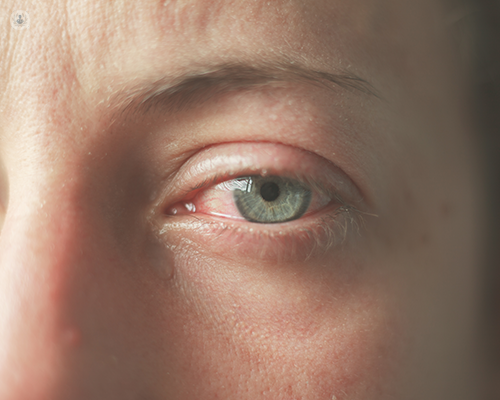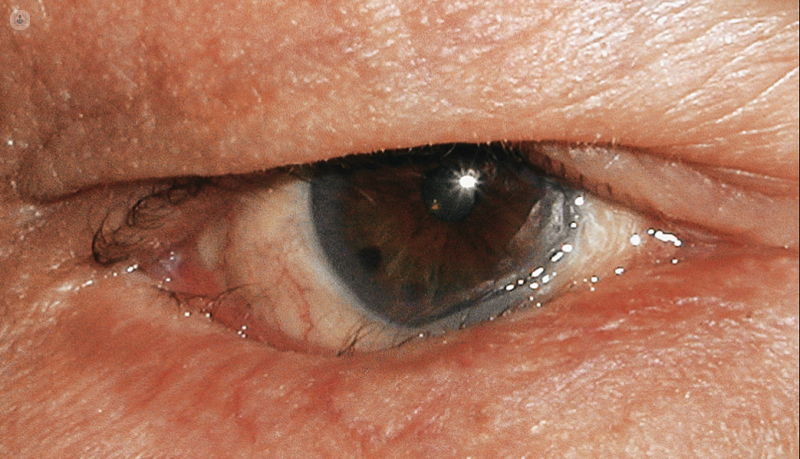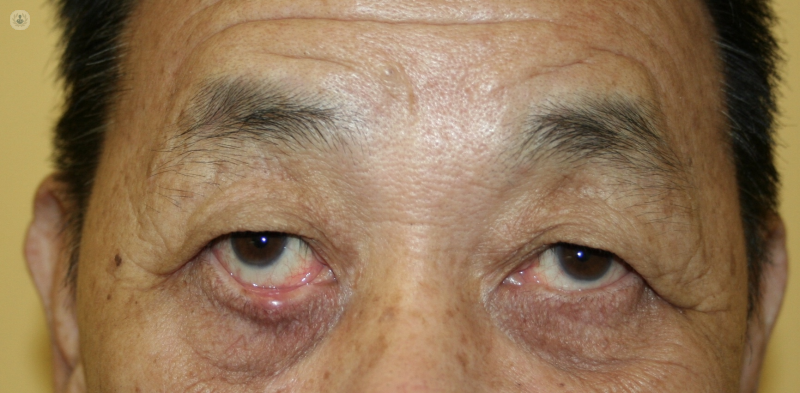Floppy eyelid syndrome (FES): what is this condition and can it be a sign of sleep apnoea?
Escrito por:Floppy eyelid syndrome can affect the upper and lower eyelid and can cause red eyes and skin irritation. Mr Radwan Almousa, a highly skilled ophthalmologist from London and expert in managing the condition, is on hand to explain all you need to know about this under-diagnosed condition.

What causes floppy eyelid syndrome?
The eyelid is supported with a middle layer called the tarsus, which gives the eyelid its rigidity. When the tarsus starts to lose this rigidity and become more bendable and flexible, the eyelid starts to be floppy.
What exactly is floppy eyelid syndrome?
As the name implies, floppy eyelid syndrome is characterised by very elastic upper lids that became easily distorted and turned outwards with minimal lateral traction of the eyelid. The tarsal plate (the connective tissue behind the eyelid) is found to be rubbery, with a loss of fundamental rigidity, allowing the eyelid to be folded over itself with ease. It is usually associated with marked papillary conjunctivitis (a type of allergic conjunctivitis) underneath the eyelid with symptoms of irritation and red eyes.
Who is more likely to have this?
Floppy eyelid syndrome is more common in patients with increased weight. It is associated with 4% with patients of normal weight - patients with a body mass index (BMI) of 18.5 to 25 - as opposed to 44% in obese patients, with a BMI of 49 or over.
What is the difference between entropion and ectropion eyelids?
Entropion is the inversion of the eyelid toward the eyeball, which causes the eyelashes to rub against the eyeball.

It’s mostly related to lid laxity that comes with age, albeit it could be related to eyelid scaring, which called “cicatricial entropion”. Entropion is mostly noticeable in the lower lid, and when it is in the upper lid, it would be mostly cicatricial entropion.
Ectropion is the opposite, which is the outward turning of the eyelid away from the eyeball, which leads to dry, watery eyes.

Again, it is mostly related to age-related lid laxity, meaning the lid muscles become looser, however, it could be related to cicatricial (scarring) changes as well.
Is floppy eyelid syndrome related to sleep apnoea?
The risk factors for sleep apnoea (SA) are very similar to those of FES: obesity, reaching middle age and being male.
Sleep apnoea is characterised by frequent collapses in the upper airway during sleep, intermittent hypoxia, and interrupted sleep. However, only 2 to 7% of patients with sleep apnoea may be symptomatic, even if they were diagnosed with a sleep study (nocturnal polysomnography).
Literature suggests that FES is associated with sleep apnoea in 85% to 96% of cases, however, the majority of these patients would have no symptoms of sleep apnoea.
On the other hand, the opposite is not clear, which means that patients with sleep apnoea do not have strong a correlation with FES
.
How do you fix floppy eyelid syndrome?
Treatment is usually surgical. Lubrication and topical anti-inflammatory drops could be used to ease symptoms until surgery can take place.
The main purpose of the surgery is to increase the tone of the eyelid without sacrificing the tarsus, which usually provides the maximum possible strength to the eyelid. The recommended surgical procedures are the ones that increased the tone to the medial and lateral tendons of the eyelid with minimal sacrifice or no sacrifice of the tarsus.
Patients do need to keep in mind, however, that there is a considerable rate of recurrence of FES, which might need further procedures.
To learn more about Mr Almousa’s medical services and to receive his help for floppy eyelid syndrome or other eye conditions, visit his profile.


